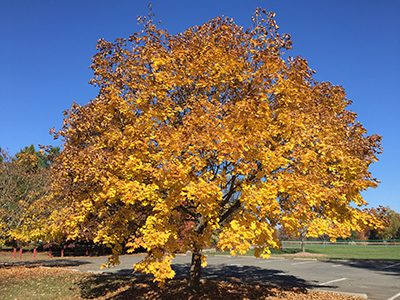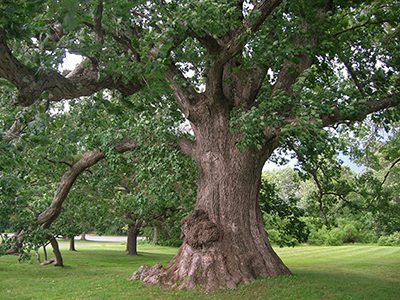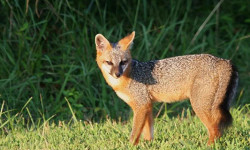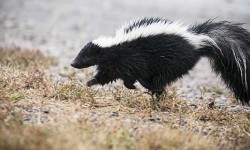By Lisa Moore
Hometown Weekly Correspondent
Trees have been the object of wonder and amazement for centuries. They have been written about by famous philosophers, authors, poets, and thinkers. They have been drawn, painted, and sculpted into by master artists and novices alike.
They are the majestic kings of the plant kingdom, and there are over 60,000 different species of them around the world. Trees are also among the oldest living things, with the oldest single living organism on the planet being a 5062-year-old pine tree (pinus longaeva) growing in the white mountains of California. Colonial species of trees that form new trees through root sprouts have been dated to be even older, as well - for example, there is a colony of quaking aspen in Utah’s Fishlake National Forest that is estimated to be an astonishing 80,000 years old. For comparison, some of the oldest living animals ever found are mere babies - like a 507 year old clam or an 180 year old tortoise.
Scientists are studying these amazingly complex organisms - looking at trees both above and below the ground, learning how they interact, learning of the many benefits they provide, and trying to understand the complex communities they make up.
 The life cycle of a tree starts out as a seed, which becomes a sprout. As leaves form, it grows into a seedling, which develops into a sapling, continuing on as an immature tree. Finally, it matures into the adult tree, eventually entering the elderly tree phase and ultimately, death. There is significant variation in life span of trees, depending on species type, local weather conditions, the impact pests and humans have on them and the environment, and changing climate conditions.
The life cycle of a tree starts out as a seed, which becomes a sprout. As leaves form, it grows into a seedling, which develops into a sapling, continuing on as an immature tree. Finally, it matures into the adult tree, eventually entering the elderly tree phase and ultimately, death. There is significant variation in life span of trees, depending on species type, local weather conditions, the impact pests and humans have on them and the environment, and changing climate conditions.
Social climbers
Throughout history, there have been references to the way trees speak and to the song of the trees - literature is dotted with mentions of whispering pines, crackling leaves, or the hum of a forest. Scientists are now trying to unravel the language of trees. Learning the language of trees might seem absurd to some, but language or communication can be achieved in many ways, and would indicate a level of intelligence.
Many people see a tree as existing primarily above ground. However, there exists an underground hidden world of trees that are like neighborhoods with a vast network of roots that communicate with other trees. The expansive underground network of roots acts as an information and product highway. Tree roots leak out sugars and other compounds that can be absorbed by neighboring trees. This can help less productive trees, trees with damaged canopies, and even stumps to survive, long after they can no longer make their own food. Trees share nutrients through fungal threads that grow in the soil like giant spiderwebs, exchanging hormones and other nutrients between neighboring trees. An astounding 50-70 percent of a tree’s energy is used for what goes on underground, with tree roots connecting and intertwining to create massive living organisms. What we see above ground is only the tip of the iceberg, a tree’s root system can have a similar or even larger mass then the portion above ground.
In undisturbed forest environments, trees rely on neighbors growing around them to create and maintain the appropriate microclimate they need for survival. Through their complex root systems and bacterial and fungal colonies within the soil, trees can share information, food, and nutrients. The density of tree growth also plays a role in protecting trees from high winds and the damaging effects of storms; outer trees take the brunt of a storm’s impact, sheltering others further in the forest. The complex level of communication among trees takes place above ground as well, with trees broadcasting information in the form of hormones, seeds, and pollen, through wind, water, and animal dispersal. These signals help in tree reproduction, maintaining community health, and in defense against predators.
Breathe in, breathe out
 One of the amazing adaptations trees have is the ability to use the sun’s energy, carbon dioxide found in the air, and water absorbed by the roots in a process known as photosynthesis. This process allows trees and other green plants to make their own food and thus provide food for a myriad of life on earth. Perhaps most importantly, trees produce oxygen - an essential element for human survival - as a byproduct of photosynthesis. In fact, the gas exchange in trees is exactly opposite of gas exchange in humans and organisms; while trees need to take in carbon dioxide for their survival and give off oxygen as a waste product, humans and other animals require oxygen to survive and give off carbon dioxide as a waste product of respiration. There is then a unique symbiosis between plants and animals, each needing the other to survive. Even the structure of a trees roots and branches mirror the branching structures of the bronchial tubes in our own lungs.
One of the amazing adaptations trees have is the ability to use the sun’s energy, carbon dioxide found in the air, and water absorbed by the roots in a process known as photosynthesis. This process allows trees and other green plants to make their own food and thus provide food for a myriad of life on earth. Perhaps most importantly, trees produce oxygen - an essential element for human survival - as a byproduct of photosynthesis. In fact, the gas exchange in trees is exactly opposite of gas exchange in humans and organisms; while trees need to take in carbon dioxide for their survival and give off oxygen as a waste product, humans and other animals require oxygen to survive and give off carbon dioxide as a waste product of respiration. There is then a unique symbiosis between plants and animals, each needing the other to survive. Even the structure of a trees roots and branches mirror the branching structures of the bronchial tubes in our own lungs.
Acting as the lungs for the planet, trees play a vital role in providing oxygen but the benefits trees provide are even more numerous. Trees reduce air pollution when they take in carbon dioxide, thus impacting air temperature and decreasing global warming. Tree transpiration, which is the movement of water into and out of a tree, and tree canopies affect air temp, radiation absorption, heat storage, wind speed, relative humidity, air turbulence, light and radiation reflection, and surface roughness - all of which can all have a significant impact on and cause changes to the microclimate. This can alter pollution levels and summer air temperatures, affecting the formation of ozone; cooler temps reduce ozone formation.
Every acre of trees meets the daily oxygen needs of approximately 18 people; one human requires approximately 7-8 trees worth of oxygen to live each year, since humans take in about 740 kg of oxygen per year and an average mature tree produces about 100kg of oxygen per year. In addition, one acre of trees can absorb the CO2 produced by driving a car 26,000 miles, reducing harmful greenhouse gases.
The benefits of trees are enormous. Trees and forests help produce clean air and clean water, prevent flooding, offer noise reduction benefits, create natural windbreaks, provide shade, and provide food and shelter for many forms of wildlife. Having trees in an area benefits the area by reducing storm water runoff, which reduces erosion and filters pollutants from waterways.
The negatives associated with tree removal may be less obvious, but are no less significant. Local cutting down of trees in urban and suburban areas create “heat islands” with higher amounts of air and noise pollution. Trees planted around homes reduce energy use in homes and buildings by cooling homes with shade in the summer and providing barriers to strong winter winds, decreasing heating costs. This, of course, is in addition to the curb appeal they add to homes. They also help settle and trap particle pollutants that cause lung damage, and they absorb dangerous gases as they supply oxygen.
With all the amazing benefit trees provide, perhaps we humans should be doing more tree hugging and less deforestation - without the trees, all life on this planet would be unable to survive.
























